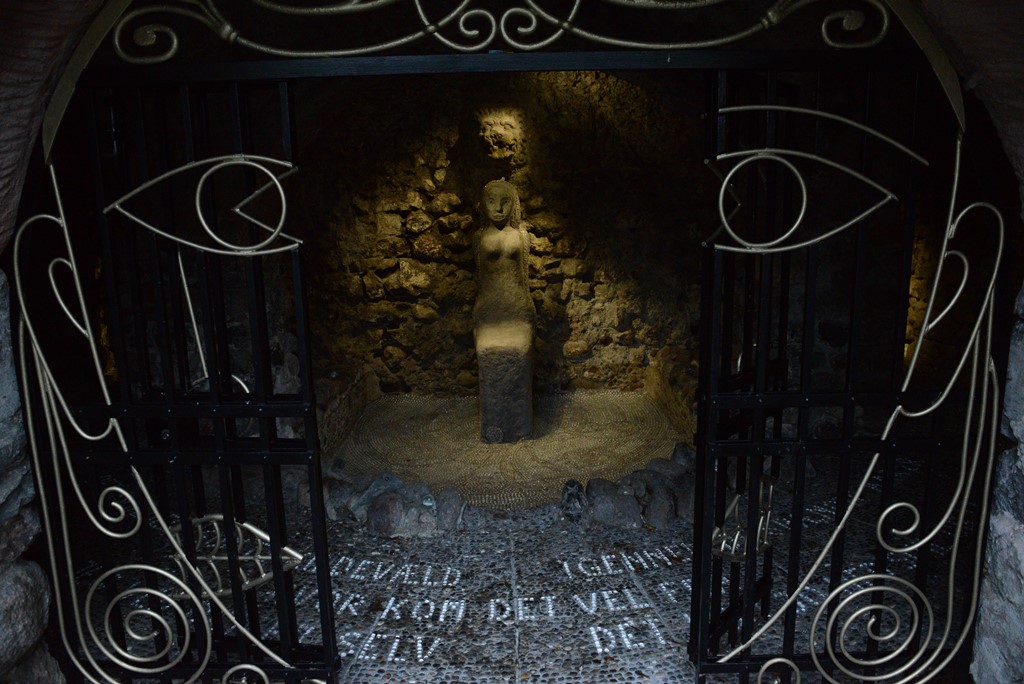These days I’m unfolding my spirit at the annual Roskilde Festival. This year the festival have an extended art program. One might ask – What is its relevance? What potential does it hold? And what are the long-term effects of this ‘investment in the arts’?
More than music
The Roskilde Festival is much ‘more than music’. It is also a temporary society and liminal space-in-between, where the premises of everyday life is put on hold and a more free, challenging, creative and adventuress existence or being in the world is accentuated. The Roskilde Festival is very aware of that, including the potential that this hold.
Could the extensive art program be understood as a mean to emphasize this potential – To create value in this special and temporary space that the festival constitutes? And if so, why is that so?
Art Value
Since the industrialization and the establishment of the modern art system, art has lived an autonomous live – Living and breeding to offer experiences and engagements in the world that holds other qualities than those in daily life. It is frame refined to evoke and handle chaotic, sensuous, creative and intensified being.
It is also a way to stress the sense of togetherness, and evoke a critical awareness in the co-participating ‘audience’.
Co-creation
Thus, it is a way to involve and even poke at the responsibility of the festival guests to be co-makers of the festival. Instead of being a passive consumer or an outside ‘judge’ of this explosive event they constitute the event itself. One of the slogans of this years Roskilde backstage event is ‘We make the frame – They paint the picture’. The art program can be understood as an intensification of that frame. Which is also what the festival-goers of today want. As Signe Brink Pedersen articulate it:
“The feedback we get from the festival-goers, is that the festival is a big playground, and that, for many, the more memorable experiences are not the ones in front of the different arenas of music, but rather the funny and unexpected occurrences happening. Art can make these occurrences more frequent and more valuable”
From motion to emotion
The Roskilde festival art program, which focuses on art as a frame of unique interactions and relational encounters also mirrors the ‘relational and interventionist turn’ within the art world. Art is no longer merely identified as an object to be consumed, enjoyed or contemplated by a more or less passive audience. Rather the artists become frame setters who facilitate a special room – A valuable space-in-between for new modes of being in the world and new encounters. Thus, it is a space of motion and co-creation. The music however, as Signe Brink Pedersen, also put it, invites for a more emotional experience. In front of the stages we can all dwell and let ourselves be overtaken by the emotions that the music ignite in our inner landscapes. Put roughly – “In the warm-up-days motion is in focus and when the festival starts Thursday emotions take over” as Signe also explain.
Warm-up – Cool-down – Long-term
In this way the extended art program also point toward a strengthened focus on the warm-up-days that seem to be gain more and more importance for the festival as a whole and thus also for the festival as a micro-society where the premises of everyday life are put on hold and other modes of being activated.
Up to 130.000 people let themselves loose in this space-in-between at Roskilde Festival every year – The need and the attraction is outspoken and the opportunity to explore new utopias present. But once it is over what happens then? Will the festival-goers be moved, maybe even mindset-shiftet, and reintegrate into everyday life with new capabilities as agents of sustainable (in its broadest sense) and value-creating stand points? The art program can be seen a way to qualify this experiment and make it more long-term as the co-creation experiences are embodied and performed by the festival-goers themselves. I for one, will attempt to go deep…

